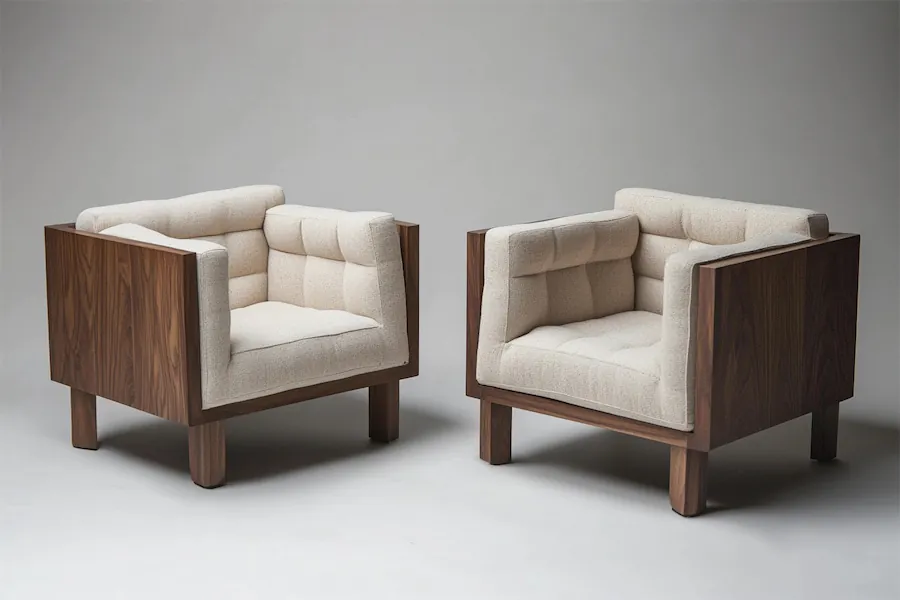Square chairs are a distinctive category of seating that emphasize geometric precision and minimalist design. Their clean lines and functional aesthetics make them a popular choice in contemporary interiors.
History and Origins of Square Chairs
The evolution of square chairs aligns with the broader history of chair design, which has seen significant transformations over centuries. From the rudimentary stools of ancient civilizations to the technologically advanced ergonomic chairs of today, the journey of chair design has been both fascinating and transformative.
In the mid-20th century, designers began experimenting with new materials and forms, leading to the creation of iconic pieces that balanced functionality with aesthetic appeal. This era marked a period of incredible creativity in chair design, with icons like the Eames Lounge Chair becoming symbols of modernism and innovation.
Key Features of Square Chairs
- Geometric Design: Square chairs are characterized by their angular forms, often featuring square or rectangular seats and backs that contribute to a modern and structured appearance.
- Minimalist Aesthetics: The emphasis on simplicity and clean lines aligns with minimalist design principles, making square chairs suitable for various interior styles.
- Material Versatility: These chairs can be constructed from a variety of materials, including wood, metal, and upholstery, allowing for diverse applications and finishes.
- Functional Form: While maintaining a focus on aesthetics, square chairs are designed to provide comfort and support, balancing form with function.
Applications of Square Chairs
- Residential Spaces: Square chairs serve as stylish additions to living rooms, dining areas, and home offices, complementing contemporary and minimalist décor.
- Commercial Environments: In offices, restaurants, and waiting areas, square chairs offer a professional and modern seating solution that enhances the overall design scheme.
- Educational Institutions: Their straightforward design makes square chairs suitable for classrooms and lecture halls, providing functional seating that supports focus and learning.
Considerations When Choosing a Square Chair
- Comfort: Ensure that the chair’s design provides adequate support, especially if it will be used for extended periods.
- Material Quality: Select chairs made from durable materials that align with the intended use and aesthetic preferences.
- Space Compatibility: Consider the dimensions and design of the chair to ensure it fits seamlessly into the designated area without disrupting the spatial harmony.
- Design Cohesion: Choose a square chair that complements the existing décor and contributes to the overall design narrative of the space.
Conclusion
Square chairs embody a blend of geometric precision and minimalist elegance, making them versatile additions to various settings. Their emphasis on clean lines and functional design reflects the evolution of chair aesthetics, catering to contemporary tastes while honoring the rich history of furniture design.
